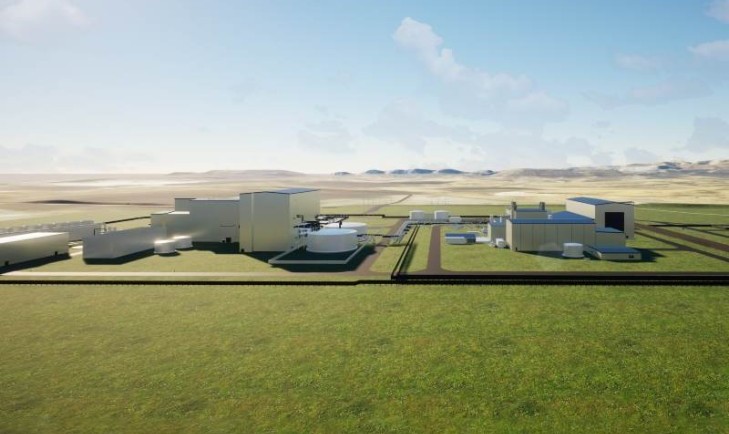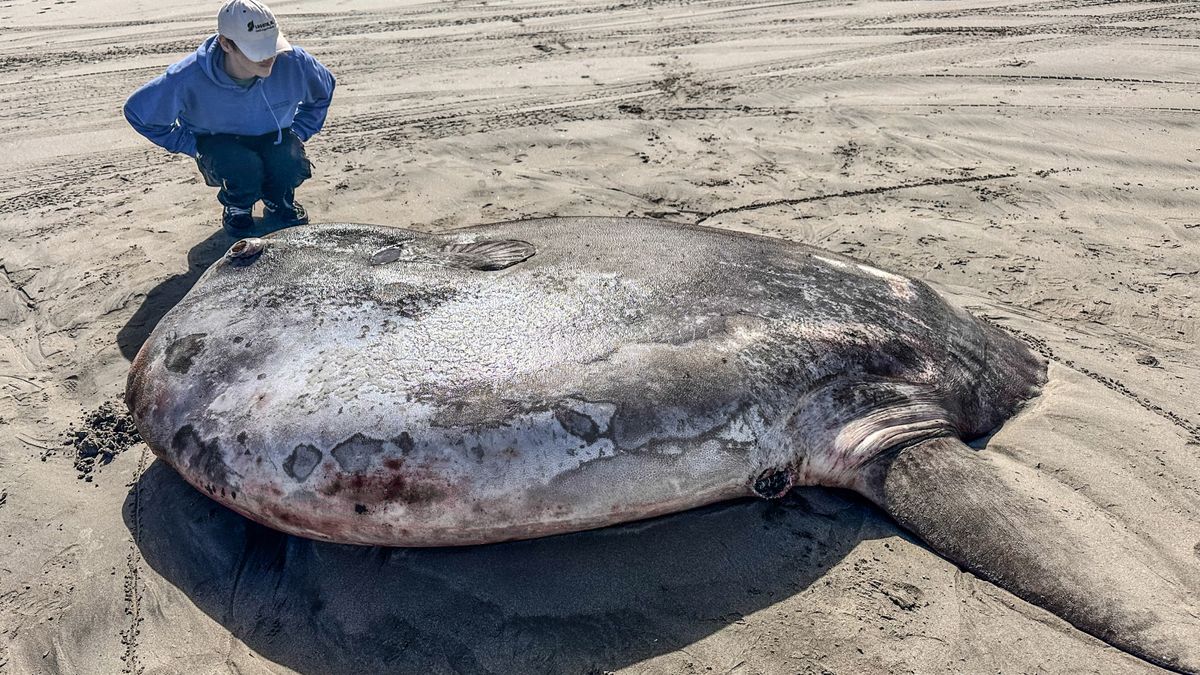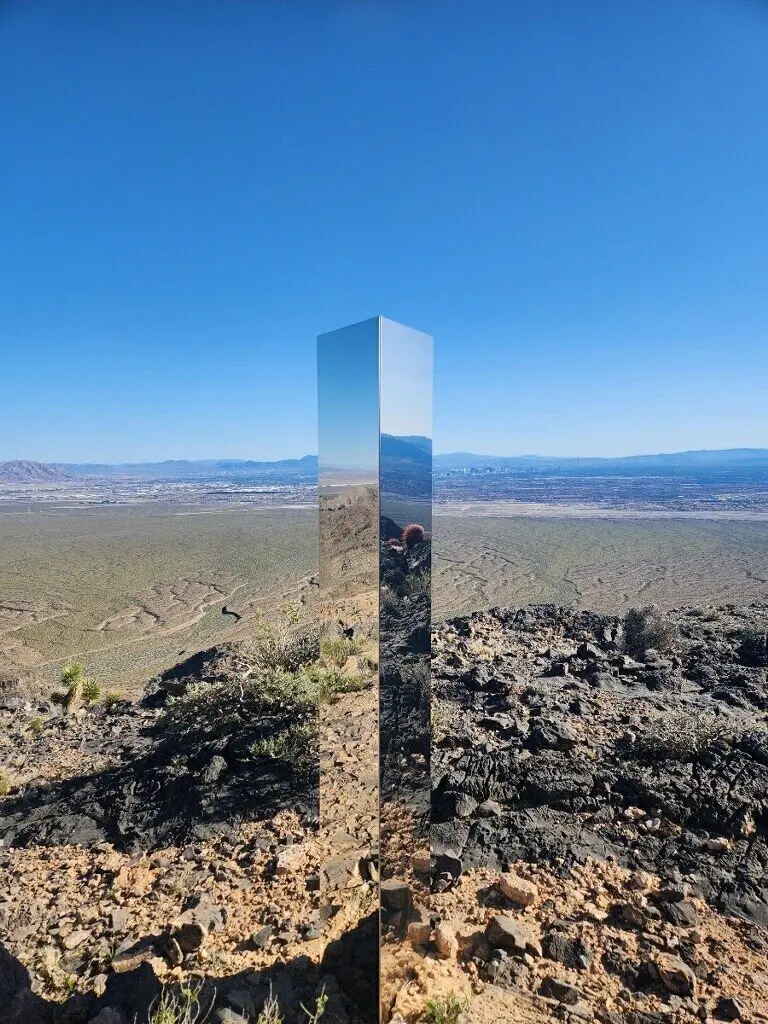06/20/24
Best of the West: Big week for nuclear; kelp farming; floating solar panels; geothermal greenhouses; clean energy investments; giant sunfish; and the monolith returns

The Western Governors' Association keeps you updated on the latest news in the West. Here are the top stories for the week starting June 17, 2024. (Photos courtesy of Adobe Stock Images, Tiffany Boothe/Seaside Aquarium, The Nevada Independent, and TerraPower).
It’s been an eventful few weeks for nuclear energy, with major news coming out of D.C. and the West.
On Capitol Hill, the Senate passed a bill to accelerate the development of nuclear power with broad bipartisan support. The bill, which passed the Senate 88-2, has already passed the House of Representatives and will now go to President Biden’s desk to be signed into law.
Known as the Accelerating Deployment of Versatile, Advanced Nuclear for Clean Energy Act, or the ADVANCE Act, the bill would cut regulatory costs for companies seeking to license advanced nuclear reactor technology, create a prize for the successful deployment of next-generation reactors, and speed up the licensing process for certain nuclear facilities.
Nuclear energy has garnered broad support as a clean, carbon free energy source to aid in the transition to more sustainable electricity sources. Nuclear is one of the few energy sources that can currently produce zero emission, reliable power at a large scale. Nuclear reactors currently account for nearly 20 percent of American electricity production, compared to other forms of carbon-free energy that produce a smaller fraction of the country’s energy.
Passage of the ADVANCE Act could aid the development of projects like the new Natrium nuclear energy project in Wyoming, which broke ground recently. The nuclear plant is being built by TerraPower, the energy company founded by former Microsoft owner Bill Gates.
Gates was in Kemmerer, Wyoming recently with Governor Mark Gordon to break ground on the new plant, nearly three years after TerraPower announced its plans for the project.
The $4 billion power plant will be built near the site of the town’s former coal-fired power plant, and it will incorporate “next-generation” techniques to deploy nuclear power, namely by using liquid sodium instead of water to cool the reactor. Once operational, the plant is expected to produce a consistent 345 megawatts of power, enough to run about 250,000 homes.
Other areas in the West, such as Pueblo, Colorado, are looking into building nuclear power on the heels of the coal industry. In Pueblo, where Xcel Energy will close its last coal-fired power plant in 2031, a community-based energy commission is exploring the possibility of developing a nuclear plant on the site of the city’s former coal plants.
Power generation has long been a part of Pueblo’s history, and residents fear the economic losses that will come from the closure of its last coal plant. Nuclear is being proposed as a way to keep power generation and good jobs in the city.
Transitioning coal plants to nuclear is not only being discussed in states like Wyoming and Colorado, but across the country and across the West.
The Department of Energy (DOE) recently found that more than 300 of the country’s coal plants could be converted into nuclear power stations, which would more than triple the current nuclear power capacity. Additionally, the DOE report found that new nuclear projects built on existing coal plants could save up to 35 percent on construction costs, depending on how much of the former plant could be repurposed for nuclear power.
Given the possibility of repurposing old power plants, eleven states have publicly expressed interest in converting their coal-fired sites into nuclear power plants. Those states include Arizona, Colorado, Utah, Montana, and Wyoming.
Ocean farming: with changes threatening traditional industries in Alaska like logging and fishing, a new market has opened up for mariculture – the practice of farming in the ocean. The main crop that Alaskans are producing is seaweed, which is taking off in popularity around the world.
Once concentrated in Asia, investors and consumers in Europe and the United States are taking notice of kelp as a potential low-carbon food source. In addition to its use as a food source, researchers are looking into the potential applications of kelp as a way to reduce methane emissions from livestock and replace fossil fuels in plastics and fertilizers.
The promise of kelp has driven new investment in Alaska, with nearly a dozen applications pending for kelp farms over 100 acres hoping to move in. Alaskan Natives hope kelp farming proves to be a reliable industry, allowing them to cultivate sea plants that they have gathered in the wild in Alaska for centuries.
Floating solar panels: new research shows that lakes and reservoirs could provide a massive boost to the renewable energy transition. Floating solar panels, known as ‘floatovoltaics’, could both reflect the sun’s energy and shade the water underneath, helping to reduce evaporation in areas experiencing drought. New research suggests that if floating solar panels were deployed in a fraction of the world’s lakes and reservoirs, and covered just 10 percent of each, the systems could collectively generate four times the power used by the United Kingdom in a year.
These floating solar fields are already being used in places like Healdsburg, California, where White Pine Renewables has situated a 4.78 megawatt solar array on ponds at the area’s wastewater treatment plant. The company says the panels provide 8 percent of the city’s total energy and generate comparably higher power thanks to the cooling power of the water and wind.
7-foot rare fish: a rare hoodwinker sunfish washed ashore on the Oregon coast recently, challenging the previously held notion that the fish only live in the temperate waters in the southern hemisphere. The fish was measured at 7.3 feet long, and its rare appearance caused worldwide attention on social media. A New Zealand-based researcher was able to confirm that it was indeed a rare hoodwinker sunfish, and not the more common ocean sunfish.
on the Oregon coast recently, challenging the previously held notion that the fish only live in the temperate waters in the southern hemisphere. The fish was measured at 7.3 feet long, and its rare appearance caused worldwide attention on social media. A New Zealand-based researcher was able to confirm that it was indeed a rare hoodwinker sunfish, and not the more common ocean sunfish.
Geothermal greenhouses: the University of Oklahoma took first-place in the Department of Energy’s Geothermal Collegiate Competition recently for its design of sustainable greenhouse heating and cooling systems using geothermal energy. The University partnered with the Osage Nation to design a system of geothermal wells in Pawhuska, Oklahoma to regulate the temperature inside the tribe’s 40,000-square-foot greenhouse.
The system is designed to alleviate the challenge of maintaining a consistent year-round temperature in the greenhouse, in order to support food security for the area, which is classified as a food desert. The University team found enough energy about 2,000 feet below the surface to heat and cool the greenhouse, as well as a nearby fish farm. The design competition, which is administered by the National Renewable Energy Laboratory and funded by the Department of Energy, offers college students experience in the renewable energy industry and the opportunity to develop real-world geothermal solutions.
Clean energy investments: the US Department of Agriculture (USDA) announced new clean energy investments in Colorado totaling $81 million. The funds will support rural Colorado communities to help deliver clean, affordable energy. Near the front range city of Fort Collins, the Poudre Valley Rural Electric Association will receive a $9 million loan to build community battery storage and solar energy projects. In Western Colorado, the Delta Montrose Electric Association was selected to receive a $72 million loan to construct a grid-connected solar photovoltaic system for rural communities in the area.
Mystery monolith returns: a towering, mirrored monolith has mysteriously returned to the Nevada desert, this time appearing near a hiking trail about 45 miles from Las Vegas. Since 2020, similar monoliths have popped up in Utah, California, New Mexico, and downtown Las Vegas. While the monoliths have caused a craze on social media, their origins and architects remain unclear.
has mysteriously returned to the Nevada desert, this time appearing near a hiking trail about 45 miles from Las Vegas. Since 2020, similar monoliths have popped up in Utah, California, New Mexico, and downtown Las Vegas. While the monoliths have caused a craze on social media, their origins and architects remain unclear.